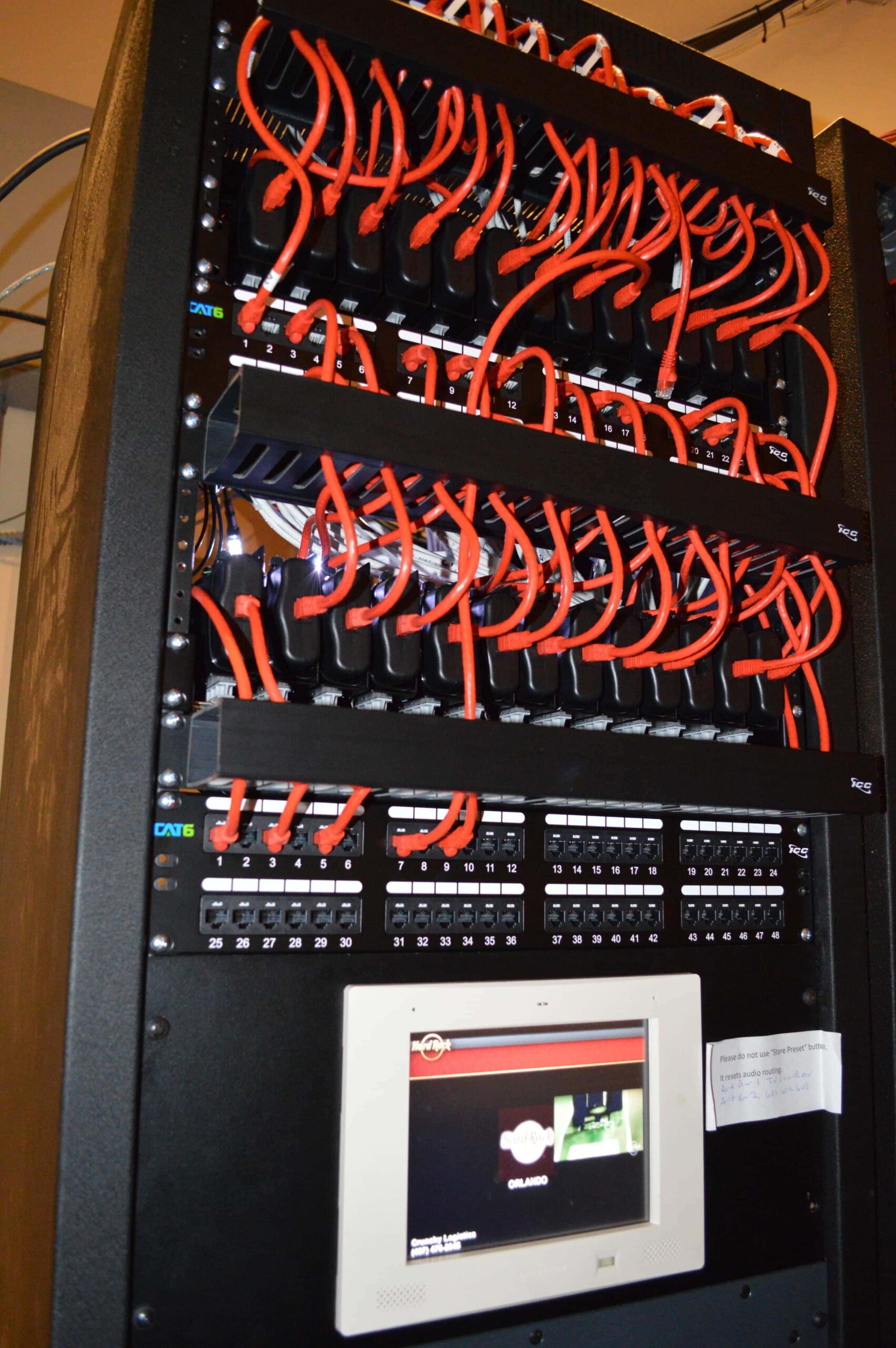A single TV can’t hold a room full of fans during a championship game. But that doesn’t mean every bar needs a full-blown video wall either. The right setup depends on how you use your screens day to day, among other things.
Let’s get to the nitty-gritty of when a video wall makes more sense versus multiple TVs, as well as how to design a system that actually works for your restaurant or sports bar.
Multiple TVs vs Video Wall: What You’re Deciding on
Choosing between a video wall and multiple TVs shouldn’t be about which looks cooler. Your choice should revolve around what serves your space better, how your guests watch, how your staff operates and how your layout performs on a packed night.
Not needless to say, each setup has its own strengths, trade-offs and long-term costs.
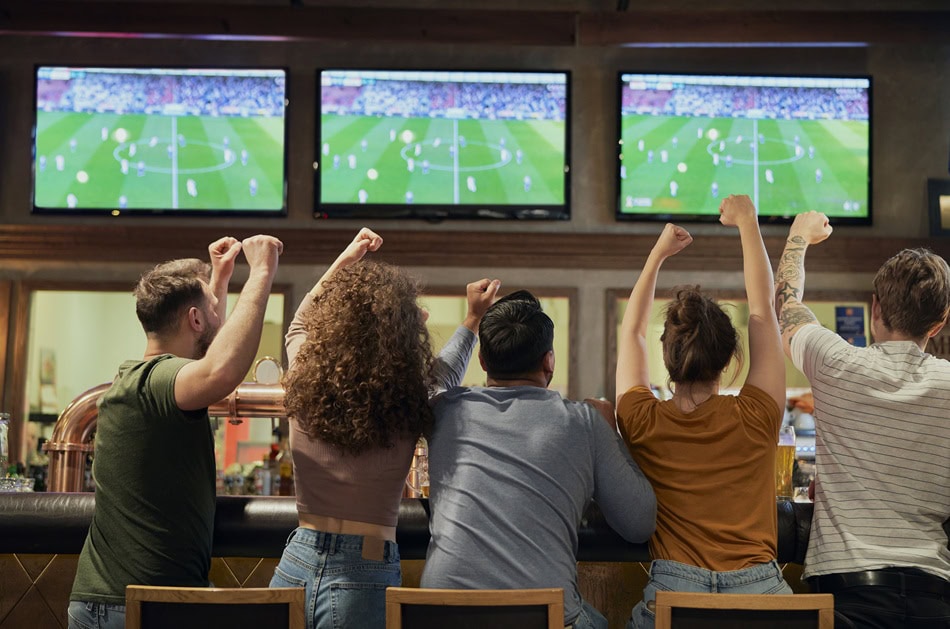
What is a video wall?
A video wall is a group of commercial-grade panels or LED tiles working together as one display. These panels connect through a processor (often called a controller) that syncs content across every tile to create a seamless image.
Video walls are ideal when you want one commanding visual, like the main game, a brand takeover or an event highlight reel. They shine in open spaces where everyone’s eyes are naturally drawn to one focal point.
Common traits include:
- Unified content across all screens (one large image)
- Thin-bezel or LED tiles to minimize visible lines
- Centralized control for switching feeds or layouts
- Brightness and durability designed for long hours of use
What is a multi-TV setup?
Multiple TVs mean flexibility. Each display can show its own channel or mirror another (it comes down to your needs. With a matrix switcher or AV-over-IP setup, staff can route different sources to different zones. It’s perfect for a sports bar where fans follow different teams.
This setup is most suitable when your space has varied seating or multiple viewing areas. You spread screens strategically for every guest to get a good view.
Advantages include:
- Showing different games or content on multiple screens
- Easier scalability, you can add screens over time
- Lower entry cost per display
- Independent control by zone or channel
Crunchy Insight
Video walls dominate when you want one shared experience. Multiple TVs win when you need variety and control. Both can deliver astonishing results if they’re designed with your floor plan, content and audience in mind.
Room First: Space, Sightlines and Seating Density
Before you talk models, mounts or resolutions, start with your floor plan.
The best AV systems aren’t picked, they’re placed. Your room’s shape, lighting and seating layout will determine whether a video wall or multiple TVs will actually perform as intended.
Map sightlines before you choose screens
Every good install starts with a walk-through. Look at where people sit, where they turn their heads and how light moves through the space during daytime. If the ‘best seat in the house’ doesn’t have a clean line to the main display, your investment loses half its impact.
Tall booths, columns and low ceilings can break up visibility, which is where a multi-TV setup tends to shine. On the other hand, an open room with a clear focal wall is a perfect canvas for a video wall.
Match screen size to viewing distance
What looks huge on paper can feel underwhelming or even overwhelming, in person. A video wall that’s too big forces people in front rows to crane their necks. A screen that’s too small makes guests squint or lose interest.
A good AV designer measures viewing distance and adjusts accordingly. For video walls, pixel pitch (the gap between LED pixels) determines clarity at different ranges. For TV-based setups, screen size and placement do the same job.
The objective is to fill your guests’ field of view comfortably without fatigue or distraction.
Seating density changes the equation
A busy bar with overlapping sightlines calls for multiple screens, each with clean visibility from key angles. Guests watching different games or hanging out in various zones don’t want to fight over one giant focal point.
Meanwhile, restaurants with defined seating areas or open dining plans can benefit from a single visual anchor, something that pulls attention but doesn’t overwhelm conversation.
If you can look across your floor and everyone’s facing roughly the same direction, go for a video wall. If they’re spread around corners or across multiple zones, an array of TVs is your best bet.
Content Strategy: What You’re Showing on a Busy Night
Your screens only work as hard as the content you feed them. Some nights are about one game that packs the house. Others are about giving everyone something to follow. The right setup relies on how your venue comes alive when the TVs turn on.
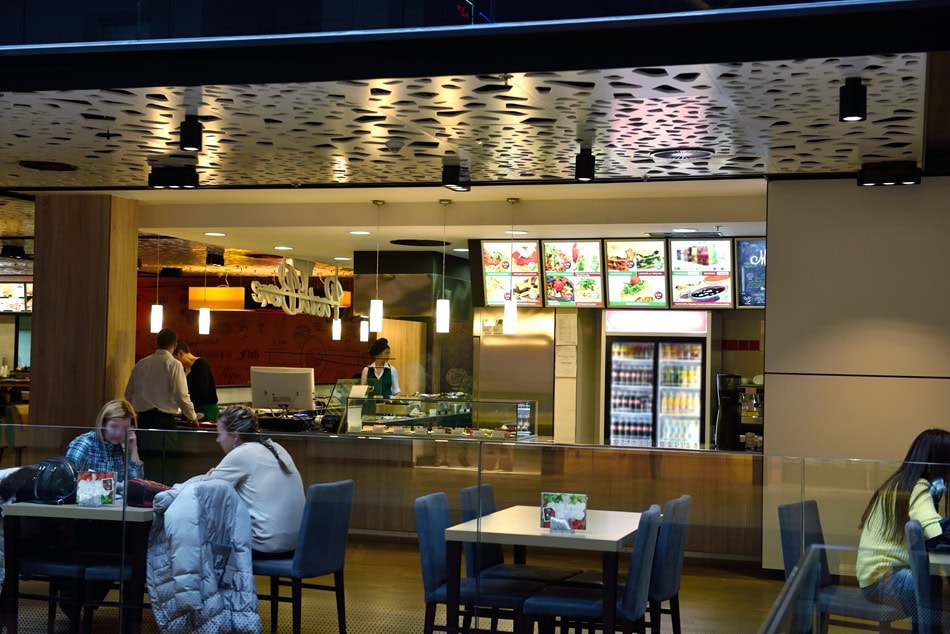
Game-night logic: one big game vs. many at once
If your crowd gathers for one main event, be it the championship, the Super Bowl, the local team’s big playoff run, or what have you, a video wall creates that shared energy. It becomes the heartbeat of the room – the moment everyone reacts to together.
But if you run like a true sports bar with fans from ten teams all yelling at once, a bunch of TVs is better. Each screen can play a different feed and guests naturally settle near the one that matters to them. Flexibility triumphs over spectacle.
Crunchy takeaway: video walls create unity; multi-TV systems create choice.
Non-sports hours: keeping screens profitable
When the games stop, your screens don’t have to go dark. Restaurants and bars that think ahead use that real estate beyond sports.
A video wall can double as a branding tool, looping promos, music videos, sponsor spots or digital art to keep the atmosphere alive. Multi-television setups can run menu boards, live feeds or seasonal content by zone. One area can feature entertainment while another shares specials or event schedules.
The smart play is consistency: always have something worth watching even when there’s no kickoff.
Special events and private bookings
Private watch parties, fantasy drafts or corporate mixers all gain from flexibility. For one, a multi-TV matrix gives staff more control if you host events where guests bring their own content or need quick input changes. You can mirror feeds, split zones or dedicate one large TV to a presentation while others keep running live games.
Video walls excel during larger hosted events or brand partnerships. They’re built for the “wow” moment – unveiling a product, streaming a concert or hosting a big fight night.
In short, know your audience. If your nights are defined by one shared screen, think wall. If they’re defined by variety, think matrix.
Image Quality Factors Owners Actually Notice
People don’t judge your setup by its specs but by what they see. Color, brightness and uniformity matter more than the brand sticker on the frame. A well-tuned display setup should look balanced, clean and comfortable to watch all night without strain.
Brightness and glare management
A screen that looks great in an empty room might look washed out once sunlight hits the bar or pendant lights bounce off its surface. Brightness levels (measured in nits) only matter if they’re matched to your environment.
Outdoor patios and sunlit dining areas call for higher brightness and anti-glare coatings. In dimmer bars, too much brightness can backfire and make screens feel harsh rather than immersive.
Bezel lines and immersion
Video walls built from LCD panels come with thin bezels (the borders around each display). Newer panels minimize these lines, yes – but they’re still visible up close. Some people don’t mind them; others find them distracting during sports broadcasts or motion-heavy content.
LED video walls solve this with a seamless surface, albeit at a higher cost. The difference becomes worth it when your wall also functions as a brand or visual centerpiece.
Multi-TV setups embrace their separation. Each display stands alone, which is fine when guests want multiple games instead of one colossal picture.
Color uniformity across screens
This is where professional calibration earns its keep. Even high-end panels look mismatched if color temperatures drift apart, one screen looks warm and golden, another cold and blue. On a video wall, this inconsistency breaks the illusion of one unified image.
The same issue hits multi-TV setups when different models or ages mix together. You’ll see it right away: one TV’s field looks dull while the next glows electric. The fix is simple: use consistent, commercial-grade models and schedule periodic calibration.
Control and Ease of Use (Staff Will Thank You)
A sound and video system should make busy nights more smooth-sailing. The right control setup lets your staff change sources, adjust zones or swap content without breaking stride. If running your AV feels like flying a plane, the design missed the point.

Make it easy to switch sources
Switching between live games or music videos should be uncomplicated. Whether you’re using a video wall controller or a TV matrix system, the key is speed. Every second of blank screen or static on game night feels like an hour to guests.
A good system gives staff direct, one-touch control in lieu of a maze of remotes. Pre-set inputs and simple app interfaces let them change feeds instantly without disrupting service.
When designed right, switching feels natural: quick tap, clean handoff, no panic. That’s it.
Zone control that matches how the room flows
The bar, dining room, etc all have different noise levels and viewing angles. Zone control keeps each space tuned to its job – loud energy at the bar, vivid visuals in dining, relaxed volume outdoors.
Done right, it means:
- Guests enjoy the right atmosphere for their area.
- Staff isn’t stuck juggling volumes all night.
- Audio and visuals stay balanced across zones.
Simply put, the goal is flow.
Digital signage software compatibility
If you already use digital signage software for menus or promos, your display system should work smoothly and continuously with it. This doesn’t mean you need new software. It just means your integrator should design around what you have.
Compatible systems let you schedule daypart content (like lunch specials or late-night deals) or blend live TV with branded visuals. The point is cohesion. In other words, every screen becomes part of the same story.
A setup that’s intuitive keeps service tight, staff calm and guests engaged even when the place is almost claustrophobically packed.
Reliability, Maintenance and Downtime Risk
Every screen looks great the first week it’s installed. The real test comes six months later during a full house on a Saturday night. Reliability is the backbone of your guest experience. The fewer service calls you make, the better your system was designed.
Serviceability matters
The smartest installs are built with access in mind. Panels, mounts, cables, everything should be reachable without tearing the wall apart. Case in point: modular designs, quick-release mounts and labeled connections. If something fails, your techie team can swap or repair it fast without shutting down the whole system.
A little planning goes a long way: leave space behind racks, group cables neatly and make certain every component has proper airflow. It’s not glamorous, but it’s what separates a professional setup from a headache.
Common failure points
Most failures don’t come from bad parts but from shortcuts. Using consumer-grade gear for commercial hours, skipping calibration or overloading a single circuit can all lead to sudden blackouts or flickering screens.
Common culprits include:
- Overheating behind closed cabinetry
- Mismatched resolutions causing handshake errors
- Power surges without adequate protection
- Loose HDMI or network runs due to rushed installation
Avoiding these starts with one rule: don’t treat restaurant AV like living room AV.
Redundancy planning
If your bar lives and dies by live sports, a system crash is, beyond inconvenience, lost revenue. Having built-in redundancy means having a Plan B ready before you ever need it. That could mean:
- Backup routing for your main video feed
- Hot-swappable components for LED tiles or processors
- A secondary controller on standby for critical rooms
It’s not that you’re expecting failure, but being ready if it happens.
Multiple TVs vs Video Wall Costs: Upfront vs. Lifetime
The price tag isn’t the whole story in AV. A system that’s inexpensive to buy but expensive to maintain is more of a delay than a deal. Understanding what drives cost helps you avoid rework and make sure you’re not replacing half your setup before next season.
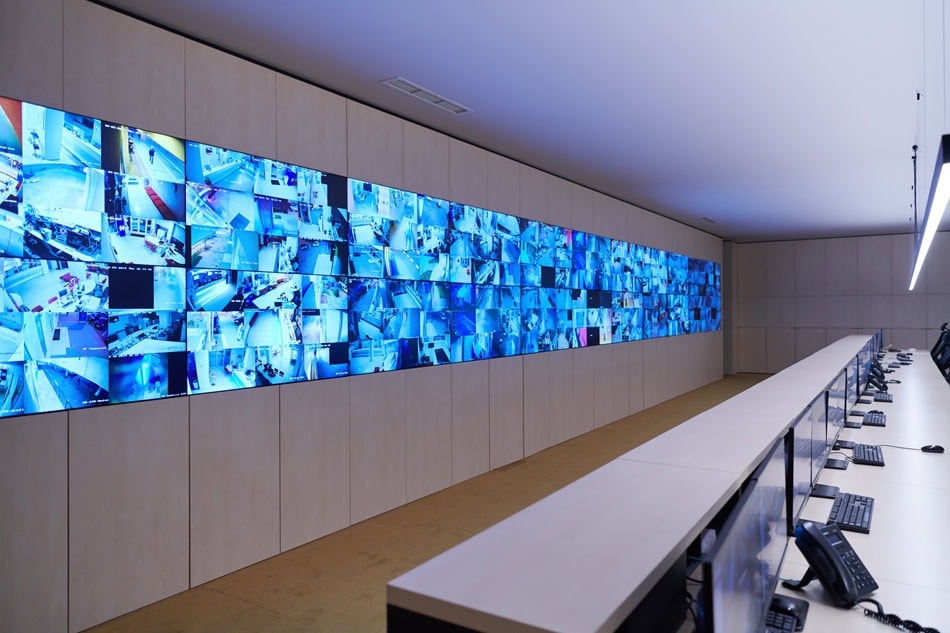
What drives cost on a video wall
A video wall’s price comes down to three things: (1) size, (2) technology and (3) processing.
The bigger the canvas, the more panels you’ll need. The tighter the pixel pitch, the higher the clarity + the cost. Add in the processor, mounting and calibration and you’ve got yourself the foundation of your investment.
What many owners overlook is the labor behind it. Video walls require exact alignment and system tuning. A great wall doesn’t simply ‘turn on.’ It’s commissioned like a performance instrument. That precision is why the end result appears effortless.
A well-built wall costs more upfront but performs consistently for years with minimal intervention. It’s the opposite of paying for repairs every few or so months.
What drives cost on a multi-TV matrix
A multi-television setup spreads your investment across several smaller screens instead of one large surface. It sounds simpler and in many ways, it actually is. But the hidden costs live in the wiring, switching and control systems that keep everything synced.
Each TV adds cabling, mounts, power requirements and signal routing. Multiply that by a dozen or more and labor can rise quickly. The difference between a good matrix system and a cheap one is dependability: no lag, no blank screens, no out-of-sync audio.
The good news – it’s scalable. You can start small and expand as needed, something you can’t do easily with a single wall.
Hidden costs you can prevent
The most costly installs are the ones done twice.
Rushed December projects, mismatched equipment and skipped planning sessions are what drive “unexpected” expenses later.
Preventable costs usually fall into three categories:
- Poor timing: last-minute installs force premium labor and limited inventory.
- Mismatched gear: mixing consumer and commercial products leads to failure points.
- Staff confusion: lack of training results in daily troubleshooting instead of smooth operation.
Spend once on design and commissioning. You’ll save thousands on stress.
When a Video Wall Wins (And When It Doesn’t)
Video walls are the showstoppers of restaurant and sports bar AV. They pull eyes, anchor attention and create that “everybody, look up!” moment during the biggest plays of the night. But they aren’t the right call for every layout or every crowd.
Knowing where they shine and for that matter where they don’t, helps you invest wisely instead of emotionally.
Best-fit scenarios for a video wall
A video wall pays off when your space is built around shared experiences. If your guests come to cheer the same team or watch the same event, one large canvas creates a unifying effect.
It’s also the right move when your design calls for something that ties the atmosphere together even when the games are off.
Opt for a video wall when:
- You host single-focus events like championship nights or concerts.
- Your space has an open floor plan with wide sightlines.
- You plan to use the wall for promotions or branded visuals off-hours.
- You want one seamless, high-impact surface without bezel breaks.
Do it right and a video wall becomes part of your brand – a feature people mention when they describe your place.
When to skip the video wall
A video wall isn’t a universal answer. In a room with lots of pillars, tight seating or mixed sightlines, it can actually limit visibility. Guests seated at odd angles might see a skewed picture (or no screen at all).
It’s also overkill for venues where variety is the main attraction, places with fans from ten different teams or guests who prefer casual viewership across zones. In those cases, multiple TVs do the job better.
Finally, cost of maintenance matters. Video walls are long-term investments. If your venue changes themes or layouts often, flexibility may outweigh visual drama.
The best integrators don’t push video walls. They recommend them when the room truly deserves one.
When to Opt for Multiple TVs (And When Not to)
Multiple TVs give you flexibility, control and coverage, three things every sports bar needs when the schedule is packed and the crowd is mixed. But while it’s the go-to solution for most venues, it’s NOT a free pass.
Poor layout, mismatched models or sloppy wiring can ruin even the best setup.
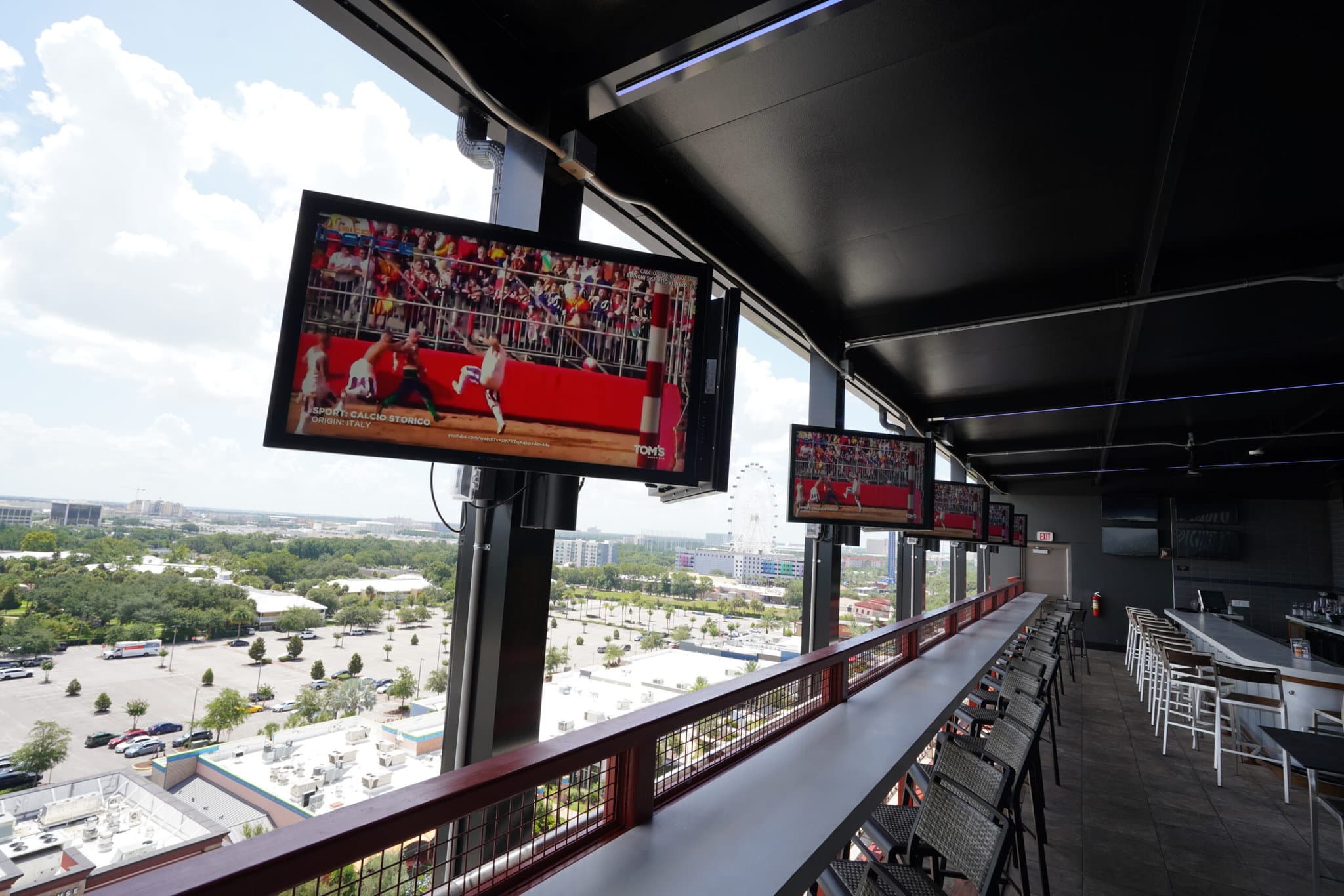
Best-case scenarios for several TVs
If your guests come for variety, not just the main event, a multi-TV layout makes perfect sense. Each screen can tell its own story. It keeps every seat connected to something worth watching.
This setup thrives when:
- You host different games or sports at the same time.
- The bar runs long and narrow, with staggered seating and viewing angles.
- You want to zone out sections for different audiences, main bar, dining area, patio.
- You prefer to scale gradually, adding or replacing TVs as business grows.
Again, flexibility is the key here. Staff can switch sources fast and tailor the atmosphere to match the night’s crowd. It’s practical and easy to maintain when designed correctly.
When multiple TVs fall short
A wall of screens can look busy or uneven if the room doesn’t have structure. Bezel gaps, mismatched colors and varying sizes create distracting visual clutter.
Multiple TVs also lose impact when everyone’s watching the same thing. Guests seated in different zones might see slight delays or hear echoes from overlapping feeds and that breaks immersion fast.
Finally, more screens mean more wiring, more power and more things to maintain. Without proper planning, the “simple” route becomes a catastrophe of cables and remotes.
LCD Video Wall vs. LED Video Wall (If You Go “Wall”)
Once you’ve decided to go big, the next question is what kind of wall to build. Most restaurant and bar setups use either LCD panels or LED tiles. They can both look incredible, but the way they perform and the way they age are totally different.
LCD video walls in restaurants and bars
LCD walls use multiple flat panels arranged into a single image. Each panel is like a large commercial TV with ultra-thin bezels. They’re stacked together and calibrated to act as one screen.
Why owners like them:
- Lower upfront cost per inch compared to LED.
- Crisp, detailed images at close range (perfect for dining distances).
- Easier color accuracy out of the box.
The cons:
- The thin bezels between panels are still visible.
- Slight differences in brightness and color can appear over time.
- They’re limited in size and brightness compared to LEDs.
LCD walls are great for smaller rooms, lower ceilings or spaces where guests sit closer to the screens, like upscale sports lounges or hybrid dining bars.
LED video walls in restaurants and bars
LED walls use individual diodes instead of backlit panels, which means there are no bezels at all. They scale easily and shine bright even in heavy ambient light. Think large, open areas or venues with plenty of daylight or stage lighting.
Why they’re worth it:
- Seamless picture with zero visible lines.
- Outstanding brightness and wide viewing angles.
- Long lifespan with minimal color drift over time.
What to keep in mind:
- Upfront cost is higher than LCD.
- Pixel pitch (the distance between LEDs) must match your viewing distance, too fine and you’re overpaying for detail no one can see.
- Repairs are more modular: instead of replacing one big screen, you swap individual tiles.
LED walls are for when the wall itself is part of the atmosphere or the “wow” element that defines the room.
Choosing pixel pitch based on viewing distance
Pixel pitch is what determines clarity on LED walls. It’s measured in millimeters and smaller numbers mean tighter pixels, sharper images up close. The trick is matching pitch to distance so you don’t overspend on unnecessary resolution.
For example:
- 2.5mm pitch – crisp for 6–12 feet viewing distance (smaller bars, dining rooms).
- 3.9mm pitch – ideal for mid-sized spaces, typical restaurant viewing range.
- 5mm+ pitch – suited for long-distance viewing or outdoor patios.
If your guests are sitting ten feet away, there’s no reason to pay for a 1.2mm wall. The right pitch balances performance with value.
Both LCD and LED walls can deliver stupendous results. The best choice depends on how your guests see them.
Audio Matters: Don’t Build a Silent Movie
You can’t separate what people see from what they hear. When the audio lags or disappears halfway through a highlight, the entire room feels it. A strong visual setup needs audio that carries energy and feels natural in every zone, from the bar rail to the back booths.
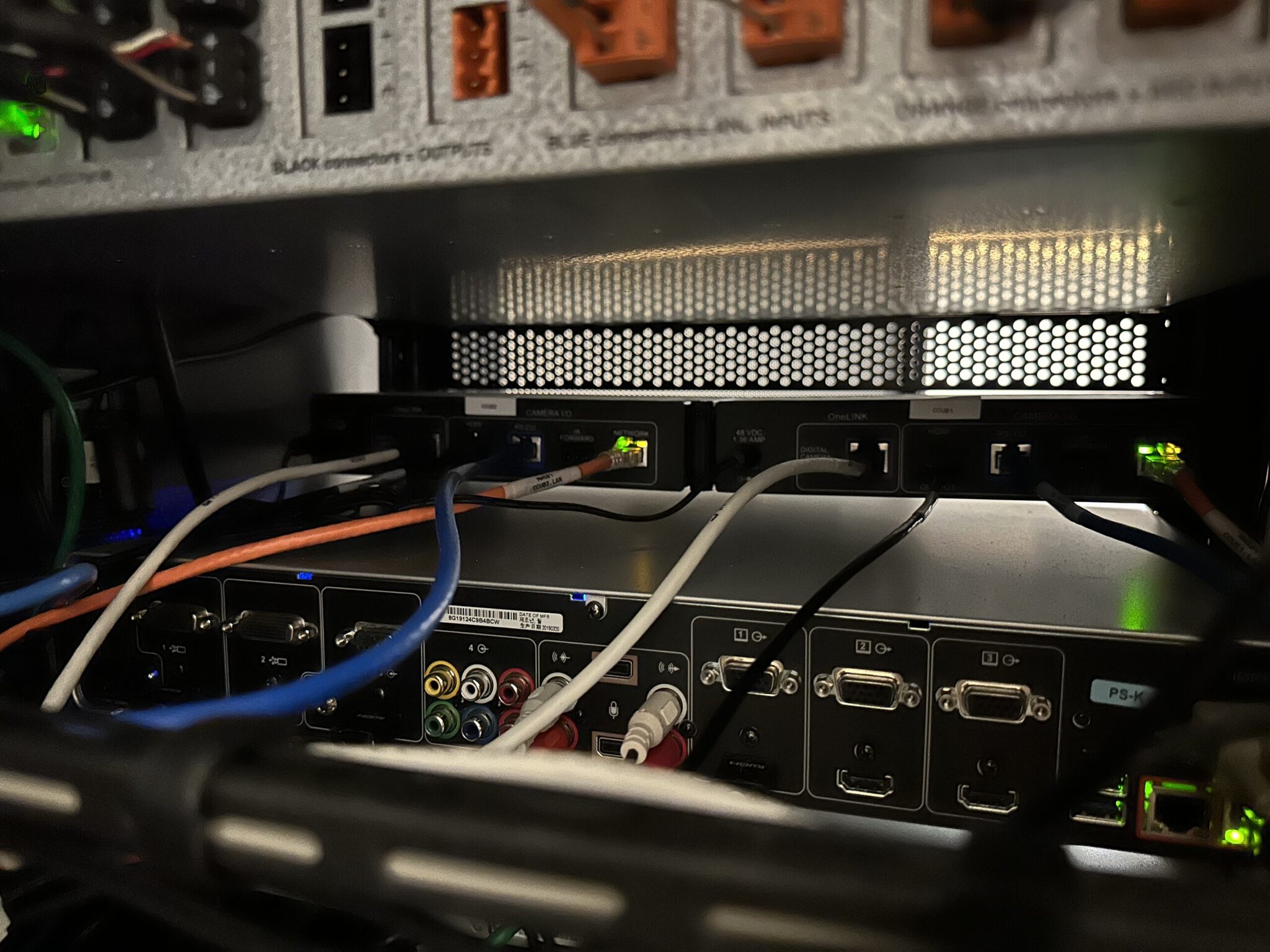
Keep video and audio in sync
The fastest way to ruin a moment is with lag, the picture hits before the sound. This happens when signals pass through different paths or devices that process at different speeds. You can’t “eyeball” sync; it needs to be tuned.
Professional systems balance video latency with audio delay. They align them so commentary and play-by-play hit together. Guests shouldn’t hear the cheer before they see the goal.
Even multi-zone systems can stay tight if the integrator calibrates signal flow and delay settings properly. The fix is invisible and that’s the point.
Match audio zones to screen strategy
A good bar sounds layered. That means every section of your venue feels connected without competing. The bar carries the energy – louder, livelier, reaction-heavy. Dining zones should feel conversational, with just enough presence to keep guests engaged without shouting.
If you’re running multiple TVs or a mix of zones, audio should follow the story:
- The main bar matches the feature game or the video wall feed.
- Secondary zones carry ambient crowd noise or music.
- Patios get their own feed and volume control.
This kind of zoning keeps the space dynamic. People move, talk and celebrate (and the sound adapts naturally with them).
Balance clarity with comfort
Volume is easy. Clarity takes work. A properly tuned system balances EQ, compression and speaker placement in order for guests to hear detail without strain. Harsh highs and muddy lows wear people out, particularly over a two-hour game.
Restaurants that focus on audio design notice guests stay longer and spend more. Not necessarily because it’s louder, but because it’s comfortable.
A good video system draws eyes. A good audio system keeps them there. With both working together, you don’t have to force energy into the room, it builds itself.
Power, Heat and Code: The Boring Stuff That Saves You Later
Most people don’t think about what’s behind the wall until smoke, noise or downtime remind them they should’ve. AV isn’t plug-and-play when you’re running multiple screens, amps and processors.
It’s a system that pulls serious power and needs to meet safety standards to stay online when your bar is jam packed.
Power distribution and surge protection
Every screen needs clean, stable power. Without it, you’ll see flickering, ghosting or total shutdowns when your beer coolers and fryers spike the same circuit.
A professional commercial AV installer maps power loads per zone so displays and back-end gear pull from dedicated circuits. Add voltage regulation and surge protection to keep spikes from frying your investment.
Heat management
LEDs, processors and amplifiers run warm and, when stacked in a closed cabinet, that warmth turns into failure. Heat kills electronics faster than anything else.
Simple steps make a huge difference:
- Allow open airflow behind walls and racks.
- Use quiet fans or vented panels for enclosed spaces.
- Keep gear rooms air-conditioned, not “just comfortable.”
Temperature monitoring systems are economical and worth every penny. They alert you before overheating becomes a shutdown.
Staying code-compliant
Electrical and fire codes exist for a reason and it’s not just to make inspections painful. Following NFPA and local building codes keeps your insurance intact and your staff safe. All wiring should be rated for commercial use (with proper labeling and conduit).
In many cities, new installations need permits and inspections, notably for rooftop or outdoor displays. Skipping them can delay openings or lead to expensive retrofits.
Crunchy insight: a compliant system is a reliable system. It keeps you open, covered and confident when inspectors or insurance representatives walk in.
Integrating Lighting and Control Systems for a Complete Experience
Most bars think “AV” means screens and sound. The savvy ones know the real power shows up when lighting joins the mix.
Lights shape energy faster than volume or visuals ever can; they tell your guests when to lean in, when to cheer and when to stay for another round.
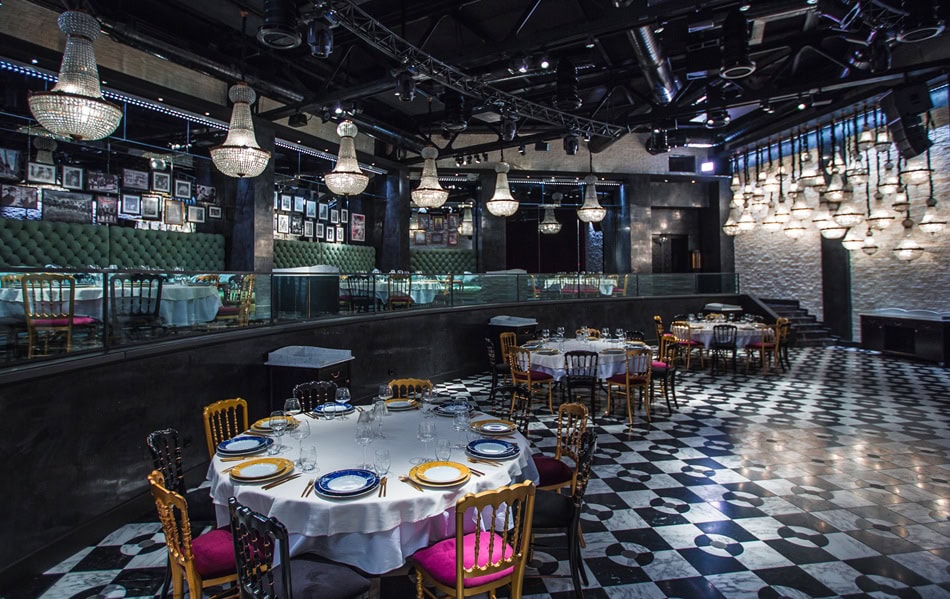
Lighting that matches the moment
A well-integrated lighting system can transition with your night automatically – lunch service, happy hour, late-night game, post-win celebration – each with its own lighting scene.
You can program smooth fades, color shifts or spotlight cues tied to the game clock or music tempo. Imagine your bar lighting pulsing in your team’s colors during a touchdown. That’s memory-making design.
It’s less about adding more lights and more to do with syncing what you already have, so it reacts naturally to what’s happening on your screens.
Unified control systems
Nobody wants ten remotes, three apps and one terrified bartender trying to turn down the patio. Unified control systems fix that.
Everything, including video, audio and lighting, runs from a single interface or touchscreen. Your staff can switch inputs, adjust lights and balance sound zones in seconds. The best systems use simple presets: “Day Mode,” “Game Mode,” “After Hours.” One tap, everything changes.
Why integration pays off
Integrated systems look better and, above all, perform better. When lighting and AV share controls, timing syncs perfectly, transitions are smooth and you avoid constant manual tweaks. It lowers the chance of user errors and keeps your atmosphere consistent no matter who’s on shift.
Plus, modern control platforms can connect with digital signage software, letting promotions, lighting and screens update together automatically. It’s cohesive, efficient and scalable, exactly what a busy restaurant or sports bar necessitates.
Seasonal Timing: Why Fall Is the Sweet Spot for Upgrades
Every AV professional has seen it happen… the bar that calls in December because their TVs are flickering during bowl season or the one that loses sound halfway through the playoffs. The pattern’s predictable: wait too long and the busiest time of the year becomes a stress test you didn’t plan for.
Fall, though? Fall is where the smart owners win.
Beat the seasonal rush
Upgrading before the holidays helps you avoid contractor backlogs + buy peace of mind. By September, most venues are past the summer slump and gearing up for football, hockey and the holiday crowd.
That’s the window where integrators still have bandwidth for custom calibration, staff training and proper testing. By the time kickoff hits, your system’s dialed in and ready to go.
Wait until December and you’ll fight scheduling conflicts, rushed installs and techs juggling emergency calls instead of fine-tuning your setup.
Train staff before it gets busy
New systems come with new controls. The slower fall months give your team room to learn how to switch feeds or troubleshoot issues without panicking in front of guests.
That extra time pays off tenfold once the crowds show up. You won’t see frozen screens or frantic calls mid-shift. You’ll see confident service and smooth transitions between events.
Test and tune without pressure
A system installed and tested early gets weeks of real-world run time before your peak season hits. You can fine-tune brightness, balance audio levels and confirm the content scheduling feels natural.
That early testing phase is the difference between “We’re good to go!” and “Why isn’t the wall turning on?” at 6:55 p.m. before game time.
Seasonal timing doesn’t sound exciting UNTIL you compare the bar that planned ahead to the one that didn’t. One is hosting sold-out watch parties; the other is still waiting on a replacement processor.
Let’s Talk Digital Display Design That Wins Seasons.
The best restaurant AV systems are built before the rush. That’s when ideas turn into plans and plans turn into systems that just work.
Whether you’re thinking about a full video wall or a smarter multi-TV setup, Crunchy Tech helps you design for the way your space really runs – the rushes, the quiet hours and everything in between.
We handle all from planning to installation, audio tuning to lighting control, so you can focus on the crowd. Let our team manage the chaos of cables.
Get a quote today and see how Crunchy Tech brings every screen, sound and spotlight together, perfectly timed for your next big season.
